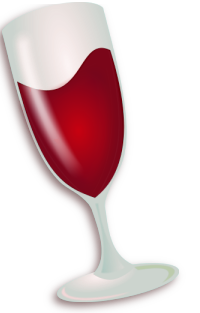Tutorials/Banished on Mac and Linux
Even though native Mac and Linux support is not currently available, there are ways to have Banished running on your computer.
Requirements
- A copy of Banished. Find out where to buy.
Tested on
- MacBook Pro Retina 13", late 2013, Intel Iris Graphics 1GB, MacOS 10.9.1, standalone game
- MacBook Pro Retina 15", early 2013, NVIDIA GeForce GT 650M 1024MB, OS X 10.9.1 (13B42), standalone game
- MacBook Air, Intel HD 5000 1GB, MacOS 10.8, standalone game
- MacBook Air, Intel HD 4000 gfx, Steam version
- Ubuntu, Radeon 6950, Steam version
Installation guide
- Install or update PlayOnMac for Mac or PlayOnLinux for Linux users

- Add the latest Wine to your local Wine versions (*Menu bar > Tools > Manage Wine Versions*)
- Click on "Install a Program" on the right of the Play on Mac/Play on Linux window, then on "Install a non-listed program" on the bottom of the next window
- In the wizard, first step, choose "Install a program in a new virtual drive"
- Give your drive a name
- Tick "Use another version of wine" and "Install some libraries"
- Select the Wine version you installed before
- Once the machine is set-up, you have to choose the libraries to install, which are:
POL_install_d3dx9andPOL_install_xact - Then you have to chose an exe to run. This differs if you are using Steam or not.
- Without Steam (easiest and recommended) - Just select the Banished standalone installer, and click next. Once installed, Play on Mac/Play on Linux window will ask you if you want to create a shortcut, select the Banished 32bits exe (ery important), click next, rename the shortcut if you want, click next, click "I don't want ..." and next
- With Steam (which is not my case but should work. But you should use the standalone version) - Download the Steam Windows Installer on the official Steam site first, then select the installer exe with the "browse" button, and let Steam install and update itself. Once done, close it, Play on Mac/Play on Linux window will ask you to create a shortcut, choose the Steam.exe, click next, rename it into SteamBanished or something similar (if you install multiple Steam games, each one should require it's own virtual drive, meaning its own Steam, thats why renaming it is not stupid), click next, click "I don't want ..." click next. In the Play on Mac/Play on Linux window select the Steam shortcut you just created, then click on "configure" on the right, and type "-no-dwrite" in the Arguments field (this corrects an error message you may have had, and corrects a graphical glitch on the Steam program itself). Close the window, run Steam, install banished, close everything and return to the Play on Mac/Play on Linux window.
- Then, for both Steam and non-Steam, in the Play on Mac/Play on Linux window, select the shortcut you just created, then click on "configure" (not "settings") in the right column
- In the window that opened, select "display" tab then change GSLS support to disabled (this is for the graphics glitch)
- Then on the "Miscellaneous" tab, click on "Open program's directory" browse to the banished install directory (if not on Steam, you should be right on it) and rename or remove the two VideoDX11 dll files (on't touch the VideoDX9 files !)
- Close the window, double click the shortcut in the Play on Mac/Play on Linux window and enjoy.
Troubleshooting
- If you have some weird flickering, turn off vsync in the game's graphic options
- If you are on Steam and the game still crashes, it may be because Steam launches the 64-bit executable by default. Simply rename the 64-bit exe to something else, and rename the duplicate 32-bit .exe to the original 64-bit name. Or find another way to make Steam launch the 32-bit version.
- If you are on Steam and the game works but freezes/hard-locks once you hit a key, try disabling Steam overlay.
| ||||||||||||||
Retrieved from "http://banished-wiki.com/w/index.php?title=Tutorials/Banished_on_Mac_and_Linux&oldid=2989"
Cookies help us deliver our services. By using our services, you agree to our use of cookies.

